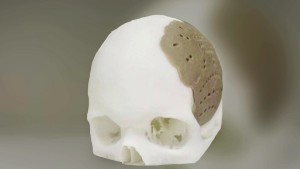Products

Who We Serve
January 15, 2016
3D printing is huge in healthcare. What do you know about it? Most of us have heard of 3D printing, also known as additive manufacturing. But healthcare applications may not be on your radar yet. They should be.
3D printers work by following a computer’s instructions, often using computer-aided design (CAD) files — digital blueprints — to build a three dimensional object one layer at a time. Typically the objects are created using materials such as plastic, ceramics and metal.
3D printing technology has been around longer than many realize — since the 1980s, when production of scale models began in geeks’ garages. Like so many garage inspired technologies this has grown into a major industry, projected to hit over $8 billion in annual revenue by 2020, according to a report by Markets and Markets. 3D applications are used worldwide and span many sectors including aerospace, automotive, consumer, government & defense, industrial/business machines, and education and research. What about healthcare? Medical applications top the list of applications, and here’s why.
According to Modern Healthcare, adoption of 3-D printing is growing faster in the healthcare industry than in any other. Medicine is taking advantage of 3D printing’s ability to make unique objects that can be tailored to individual patients. This is in great part because of the “unusually strong synergy among digital 3D design, medical imaging and 3D printing for medical applications,” according to LiveScience News. “The three form a trifecta of medical problem-solving power, where physicians can use patient-specific data to capture, manipulate and ultimately create physical solutions of all shapes and sizes.”
Orthopedists were the first to recognize the potential of 3D printing in healthcare. Today, for example, computer models are being developed to fit patients’ bone structures precisely, to create synthetic skeletal supports that are inserted into the body to incite natural processes to build genuine bone around them. A revolutionary plus: the materials used are not rejected by the body, and they slowly disintegrate as the new bone develops. Clinical trials are in the works.
In surgery, physicians are building 3D simulation models to prepare for intricate procedures such as face transplants, and for operations that require invasion of skeletal structures. The latter include jaw surgeries, knee replacements and more. Medical students are also benefiting from this kind of modeling, which is starting to replace surgical training on live animals or even worse, live human beings.
The field of prosthetics is a natural for 3D medicine applications. Historically, prosthetic fit has been inexact, often causing discomfort, sometimes to the extent that patients stop using these expensive and potentially life-changing devices. With 3D printing technology, patients’ healthy limbs are scanned and the images are fed into a computer, enabling precise design. The result: a 3D printed prosthetic that fits perfectly. People are marveling that they feel like themselves again.
Other medical applications abound: According to NIH, they include production of bones, ears, exoskeletons, windpipes, jaw bones, eyeglasses, cell cultures, stem cells, blood vessels, vascular networks, tissues, organs and more. Several biotech companies are creating tissues and organs for medical research. Dentistry is beginning to include patient-tailored artificial teeth. Even for those of us who may never need most of these applications, won’t we all applaud quick production of eyeglass lenses and frames that give us 20-20 vision and won’t fall down our noses?
High-resolution 3D printers are expensive, ranging up to $1 million. Most healthcare institutions do not yet have access to these technologies. This is changing. Leading edge hospitals are getting around purchasing costs through sharing programs, and negotiating leasing agreements with manufacturers. The federal government and other non-profit advocates are funding and promoting 3D printing. In 2013 the Obama administration awarded $30 million to create the National Additive Manufacturing Innovation Institute (NAMII). NAMII has been designed to be an umbrella organization for a growing network of universities, foundations, manufacturing companies and startups that share a mission to grow and refine 3D printing technology, and make it more readily available. And of course, the market is lubricating itself; the more applications it creates, the more it excites, and the more it grows.
3D printing in medicine is already an accepted reality. Caution: many applications are works in progress… clinical trials and regulatory factors are bumps in the road, but the road has a very green light.
Over our lifetime, it seems clear that 3D printing will dramatically change medicine, our health and well-being, and perhaps our children’s longevity. Exciting stuff. If you want to learn more, I recommend that you read this excellent report from NIH.
Stay tuned for our next FFAQ — Fascinating Faqs about healthcare IT — only published on Friday. Happy weekend!